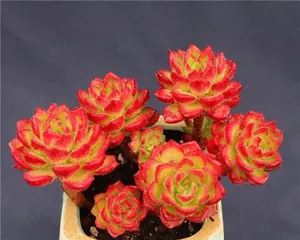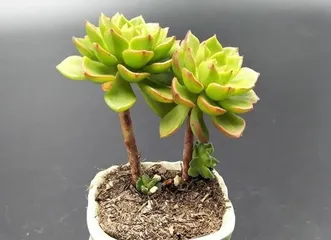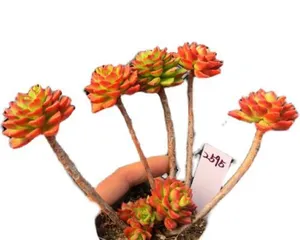Succulents are increasingly loved for their easy care and high ornamental value, and among them, the succulent 'Dyckia' is particularly sought after for its bright red color and multi-headed growth habit. However, many growers don't know how to care for this plant. Let's explore how to help your Dyckia turn red and become multi-headed.

1: Understanding Dyckia
Dyckia is native to southern Africa and is a sun-loving plant that adapts to hot, dry environments. Its leaves display a vibrant red or yellow color, which is very attractive.
2: Provide Ample Sunlight
Dyckia needs plenty of sunlight, so it should be kept in a sunny location. If kept indoors, choose a window that faces east or west.

3: Control Watering
Dyckia prefers a dry environment, so water should be given sparingly but frequently. Generally, watering once a week is sufficient. Be careful not to get water on the leaves.
4: Provide Suitable Temperature
Dyckia is adapted to high temperatures, with an ideal range of 20-30°C. It can be placed outdoors in the summer but should be protected from direct sunlight.
5: Choose the Right Potting Soil
Dyckia requires loose, well-draining potting soil; overly fertile soil is not suitable. You can mix materials like perlite, vermiculite, and horticultural sand to create the potting mix.

6: Fertilizing
Succulents do not require frequent fertilizing; once a year is enough. You can choose a fertilizer rich in potassium, such as well-rotted chicken manure or fish meal.
7: Regular Pruning
Dyckia will produce many side shoots, which can be pruned regularly to keep the plant neat and attractive.
8: Enhance Disease Resistance
Dyckia is susceptible to fungal diseases, so it's important to strengthen the plant's immunity during cultivation. Plant health agents can be used for prevention.
9: Master the Timing of Repotting
The roots of Dyckia are relatively shallow and can be easily damaged. Therefore, it's important to choose the right time for repotting, which is generally done in spring and autumn.
10: Propagation Methods
Dyckia can be propagated by cuttings or division. Division is the simplest method: just remove a side shoot and insert it into moist potting soil.
11: Control Air Humidity
Dyckia does not like humid environments, so pay attention to controlling air humidity. You can use dehumidifiers, air conditioners, and other equipment.
12: Prevent Sunburn
Dyckia is prone to sunburn, so it's important to avoid direct sunlight. In the summer, you can use shading nets or other equipment to block the sun.
13: Pay Attention to Pest Control
Dyckia is susceptible to pests like aphids and whiteflies, so prevention and treatment are important.
14: Create a Suitable Growing Environment
Dyckia is a somewhat special plant that requires a suitable growing environment. You can use humidifiers, grow lights, and other equipment to provide better growing conditions.
15:
The above are the care methods for Dyckia. Only with proper care can it turn red and become multi-headed. If you also want to have a beautiful red succulent pot, you might as well try these methods, and I believe you will achieve good results.